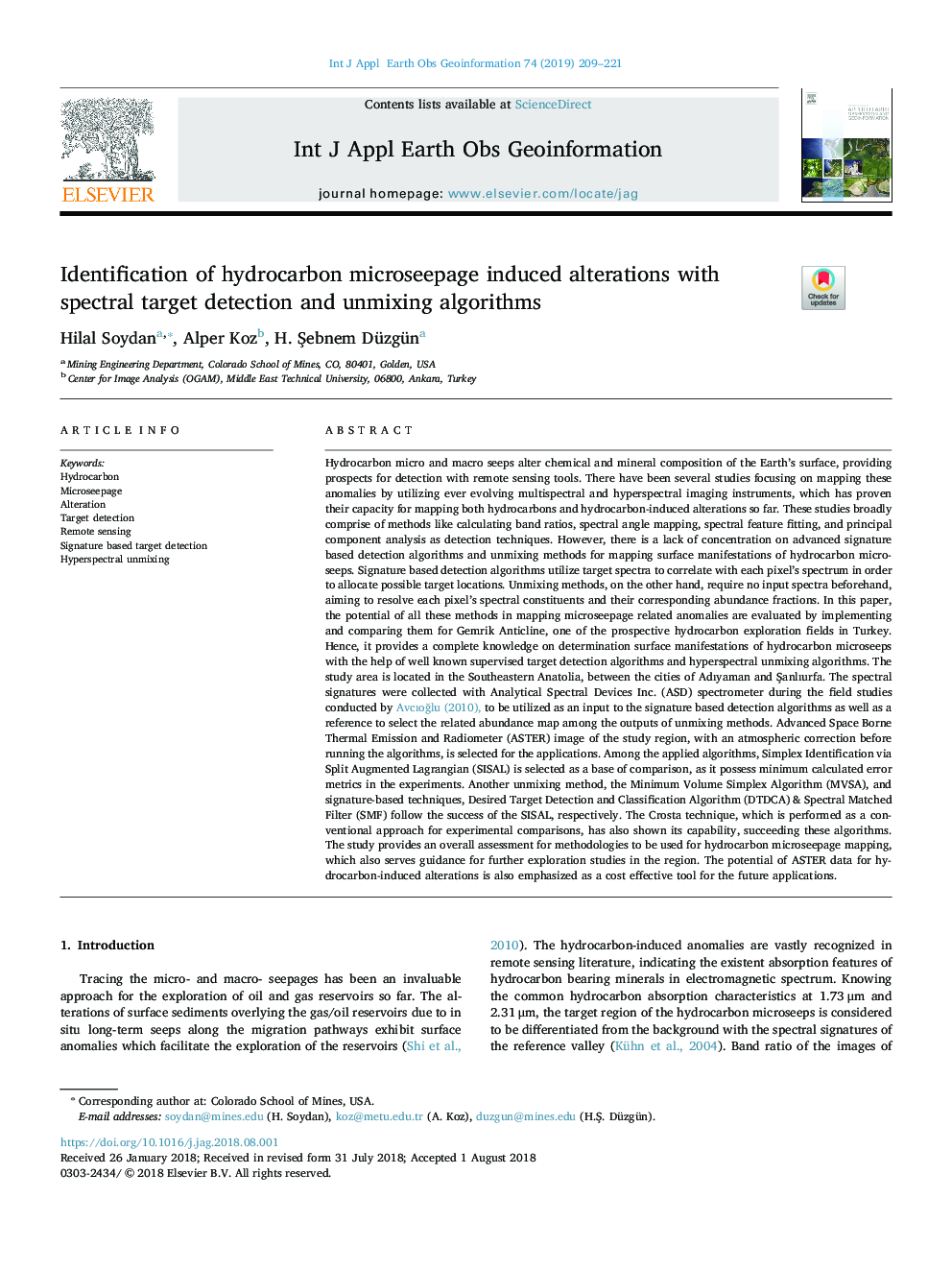| کد مقاله | کد نشریه | سال انتشار | مقاله انگلیسی | نسخه تمام متن |
|---|---|---|---|---|
| 11028672 | 1646758 | 2019 | 13 صفحه PDF | دانلود رایگان |
عنوان انگلیسی مقاله ISI
Identification of hydrocarbon microseepage induced alterations with spectral target detection and unmixing algorithms
ترجمه فارسی عنوان
شناسایی تغییرات ناشی از میکرو پراکندگی هیدروکربنی با تشخیص هدف طیفی و الگوریتم های غیرمجاز
دانلود مقاله + سفارش ترجمه
دانلود مقاله ISI انگلیسی
رایگان برای ایرانیان
کلمات کلیدی
موضوعات مرتبط
مهندسی و علوم پایه
علوم زمین و سیارات
کامپیوتر در علوم زمین
چکیده انگلیسی
Hydrocarbon micro and macro seeps alter chemical and mineral composition of the Earth's surface, providing prospects for detection with remote sensing tools. There have been several studies focusing on mapping these anomalies by utilizing ever evolving multispectral and hyperspectral imaging instruments, which has proven their capacity for mapping both hydrocarbons and hydrocarbon-induced alterations so far. These studies broadly comprise of methods like calculating band ratios, spectral angle mapping, spectral feature fitting, and principal component analysis as detection techniques. However, there is a lack of concentration on advanced signature based detection algorithms and unmixing methods for mapping surface manifestations of hydrocarbon microseeps. Signature based detection algorithms utilize target spectra to correlate with each pixel's spectrum in order to allocate possible target locations. Unmixing methods, on the other hand, require no input spectra beforehand, aiming to resolve each pixel's spectral constituents and their corresponding abundance fractions. In this paper, the potential of all these methods in mapping microseepage related anomalies are evaluated by implementing and comparing them for Gemrik Anticline, one of the prospective hydrocarbon exploration fields in Turkey. Hence, it provides a complete knowledge on determination surface manifestations of hydrocarbon microseeps with the help of well known supervised target detection algorithms and hyperspectral unmixing algorithms. The study area is located in the Southeastern Anatolia, between the cities of Adıyaman and Åanlıurfa. The spectral signatures were collected with Analytical Spectral Devices Inc. (ASD) spectrometer during the field studies conducted by AvcıoÄlu (2010), to be utilized as an input to the signature based detection algorithms as well as a reference to select the related abundance map among the outputs of unmixing methods. Advanced Space Borne Thermal Emission and Radiometer (ASTER) image of the study region, with an atmospheric correction before running the algorithms, is selected for the applications. Among the applied algorithms, Simplex Identification via Split Augmented Lagrangian (SISAL) is selected as a base of comparison, as it possess minimum calculated error metrics in the experiments. Another unmixing method, the Minimum Volume Simplex Algorithm (MVSA), and signature-based techniques, Desired Target Detection and Classification Algorithm (DTDCA) & Spectral Matched Filter (SMF) follow the success of the SISAL, respectively. The Crosta technique, which is performed as a conventional approach for experimental comparisons, has also shown its capability, succeeding these algorithms. The study provides an overall assessment for methodologies to be used for hydrocarbon microseepage mapping, which also serves guidance for further exploration studies in the region. The potential of ASTER data for hydrocarbon-induced alterations is also emphasized as a cost effective tool for the future applications.
ناشر
Database: Elsevier - ScienceDirect (ساینس دایرکت)
Journal: International Journal of Applied Earth Observation and Geoinformation - Volume 74, February 2019, Pages 209-221
Journal: International Journal of Applied Earth Observation and Geoinformation - Volume 74, February 2019, Pages 209-221
نویسندگان
Hilal Soydan, Alper Koz, H. Åebnem Düzgün,
